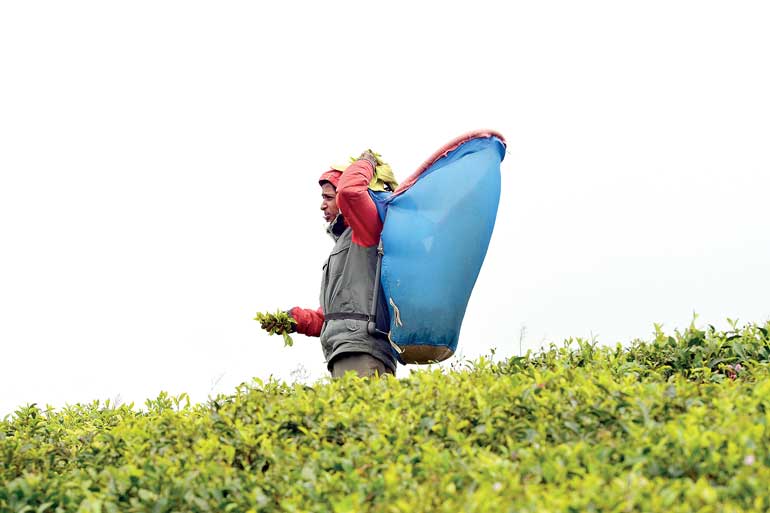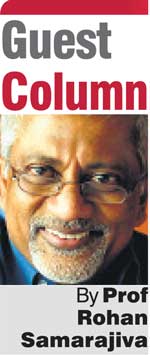Friday Mar 14, 2025
Friday Mar 14, 2025
Thursday, 1 February 2018 00:00 - - {{hitsCtrl.values.hits}}

It could have been better. Much, much, better. But it was not a disaster. That, in summary, is the story of our country since 1948, when we received independence as a collateral effect of the Indian independence struggle. The atrophying of British military power as a result of the World Wars also contributed.
Institutions
At the top of our society, the institutions appeared strong when we became free from British rule. For example, many talk about how independent our courts were and how we squandered that legacy in recent decades, especially after the appointment of Sarath Nanda Silva as Chief Justice.
There is no doubt that a strong and efficient judicial system that dispenses justice without fear or favour (and undue delay) is an essential pre-condition for wealth creation and the building of a good society. But there was little depth to what was good about our legal system. Who the litigant was still mattered in Magistrate’s Courts and District Courts.
Fairness in the superior courts was underwritten by the presence of a few truly independent judges, especially those from the Burgher community. Not them alone, but their presence made most of the judge behave better. But after 1956, the Burghers were made to feel unwelcome and departed for Australia. Our institutions gradually deteriorated.
Believing that an independent and professional administrative service was a barrier to their efforts to serve the people, our political class, inspired and led by the socialist parties, subjugated it to their will. Comparison of those at the upper levels of the administrative and foreign services of India and Sri Lanka shows how much damage has been caused.
Economy
The British did not bequeath us a dynamic economy. It was, as many in my age group learned in school, based on the export of tea, rubber and coconut. Little value addition was done. Most government revenues came from taxing foreign trade. Reliance on commodity exports made the economy vulnerable to economic cycles. In 1952, a dramatic fall in rubber prices by over 30% because of the end of the Korean War led to the Rubber-Rice Pact with China, not some kind of grand gesture of non-alignment.
But today, we are less dependent on commodities. Service exports (if we include remittances from those who work abroad, technically a form of trade in services) yielded $ 14.3 billion in 2016, higher than the $ 10.3 billion earned from goods exports, of which agriculture and mining comprised on 23%, according to the 2016 Annual Report of the Central Bank.
Remittances, which none other than the families that generate them appear to be proud of, brought in $ 7.2 billion. Contrary to entrenched perception, more men than women are now engaged in this form of service export and the proportion of skilled workers is increasing. Tourism was the biggest source of conventional service earnings, yielding $ 3.5 billion. Most of our rubber now goes out in the form of value-added tyres, gloves and such. It is second only to apparel among industrial exports.
Our economy has diversified and is less vulnerable to external forces than at independence. But the momentum achieved in increasing and diversifying exports was lost as a result of the insular policies of the past decade. Lack of attention to exports and the right kinds of foreign investment has led to greater dependence on borrowing, no longer available at concessional rates, leading to a different form of vulnerability that has to be carefully managed.
Human development
But from the perspective of citizens, life has actually improved, contrary to those who claim otherwise. Few people know or remember how life was for the citizen back then. These days, we have the Human Development Index (HDI) which was developed by the famed Pakistani economist Mahbub ul Haq.
“People are the real wealth of a nation,” Haq wrote. “The basic objective of development is to create an enabling environment for people to enjoy long, healthy and creative lives. This may appear to be a simple truth. But it is often forgotten in the immediate concern with the accumulation of commodities and financial wealth.”
However, the HDI which was devised in 1990 does not allow comparison between 1948 and now. Life expectancy is a cruder, but easier to understand, indicator that does.
A male child born in Sri Lanka in 1945-47 could expect to live 46.8 years. A female could expect live 44.7 years, two years less. The life expectancy predictions in 2015 were 72 years for a male and 78 for a female (six years longer), according to the WHO.
Behind these huge increases are significant achievements in healthcare, housing, education and even working conditions. Obviously, life expectancy could not improve for women if many of them would die at childbirth like they did at the time of independence. If polio, malaria, filariasis and various infectious diseases had not been eliminated with considerable effort and if the housing stock had not been improved, it’s unlikely that that life expectancy for everyone would have gone up by this much. And without people’s incomes and education improving, they could not have stayed alive for that long.
Revolution or reform?
Those who draw a picture of a country in dire straits tend to do so as part of advocacy of radical change. But in the centenary year of the Russian Revolution, it would be wise to exercise caution with regard to prescriptions of revolution. Revolutionary movements in the 20th Century killed millions worldwide and thousands right here. Reform may be messy. The results may be sub-optimal as has been the case in Sri Lanka. But they carry less risk of unintended consequences. Reforms demand more from us as citizens than the mouthing of grandiose slogans. The less-than-ideal pace of economic growth does call for remedial action. Should it be the replacement of the current crop of political leaders with those promising revolutionary change? Or should it be the hard work of exerting pressure on political leaders and officials through instruments such as the Right to Information Law?
Discover Kapruka, the leading online shopping platform in Sri Lanka, where you can conveniently send Gifts and Flowers to your loved ones for any event including Valentine ’s Day. Explore a wide range of popular Shopping Categories on Kapruka, including Toys, Groceries, Electronics, Birthday Cakes, Fruits, Chocolates, Flower Bouquets, Clothing, Watches, Lingerie, Gift Sets and Jewellery. Also if you’re interested in selling with Kapruka, Partner Central by Kapruka is the best solution to start with. Moreover, through Kapruka Global Shop, you can also enjoy the convenience of purchasing products from renowned platforms like Amazon and eBay and have them delivered to Sri Lanka.
Discover Kapruka, the leading online shopping platform in Sri Lanka, where you can conveniently send Gifts and Flowers to your loved ones for any event including Valentine ’s Day. Explore a wide range of popular Shopping Categories on Kapruka, including Toys, Groceries, Electronics, Birthday Cakes, Fruits, Chocolates, Flower Bouquets, Clothing, Watches, Lingerie, Gift Sets and Jewellery. Also if you’re interested in selling with Kapruka, Partner Central by Kapruka is the best solution to start with. Moreover, through Kapruka Global Shop, you can also enjoy the convenience of purchasing products from renowned platforms like Amazon and eBay and have them delivered to Sri Lanka.